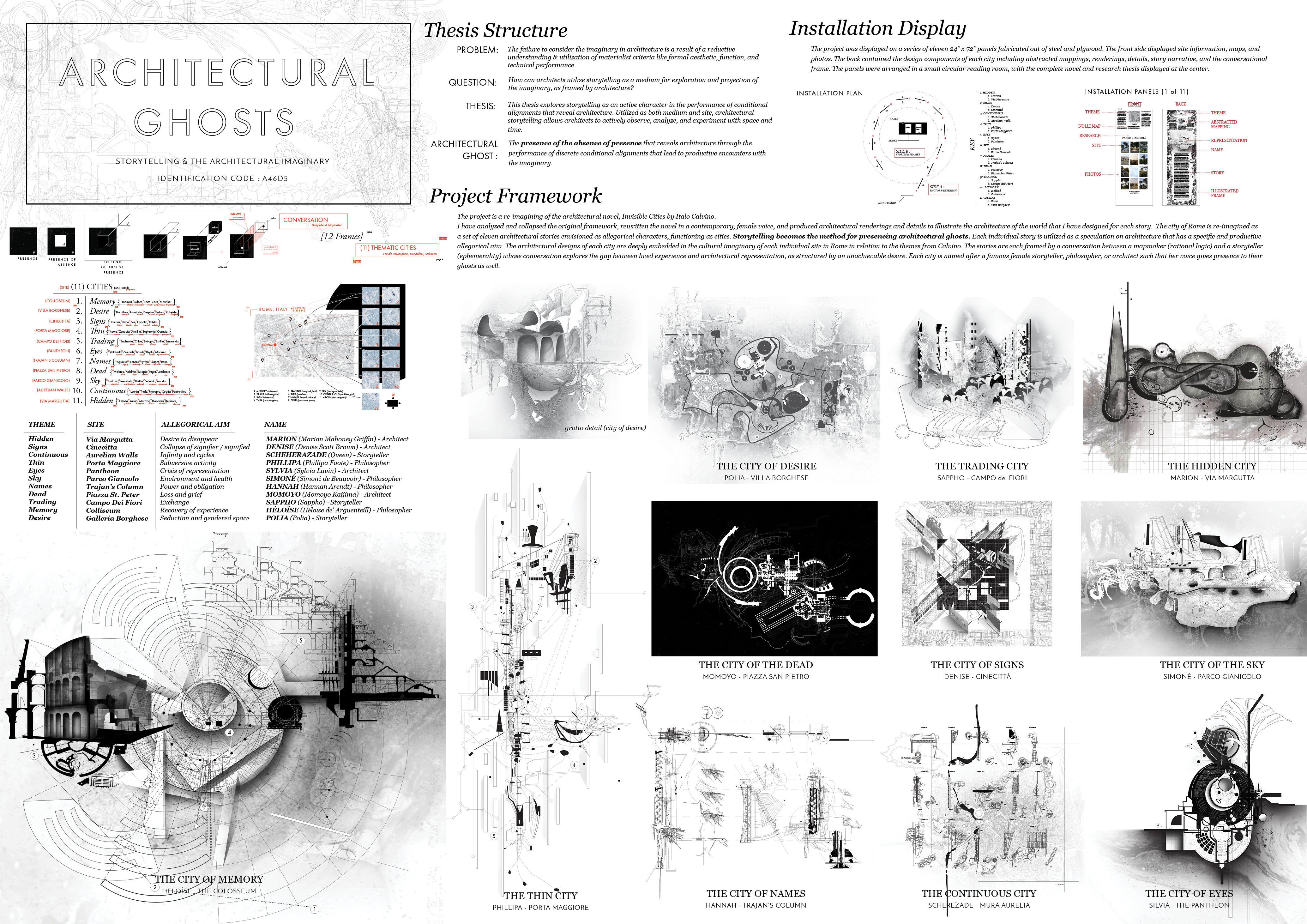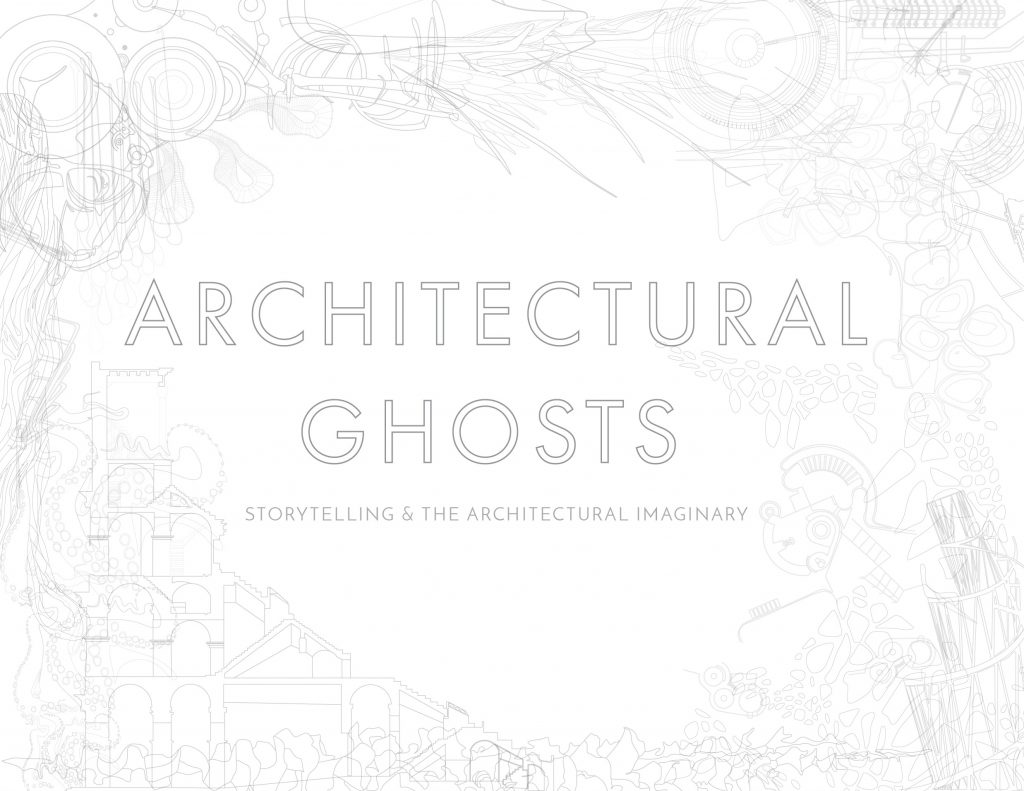The project is a re-imagining of the novel, Invisible Cities by Italo Calvino. The city of Rome becomes the site for eleven architectural stories envisioned as characters, functioning as cities. The novel’s original framework has been analyzed and collapsed, the stories re-written as speculations on architecture with specific and productive allegorical aims embedded in the cultural imaginary of Rome. The world of each story has been rendered and detailed. Storytelling becomes the method for presencing the architectural ghost, the presence of the absence of presence. Architectural ghosts reveal architecture through the performance of conditional alignments that lead to productive encounters with the phenomenal, the intangible, and imaginary.
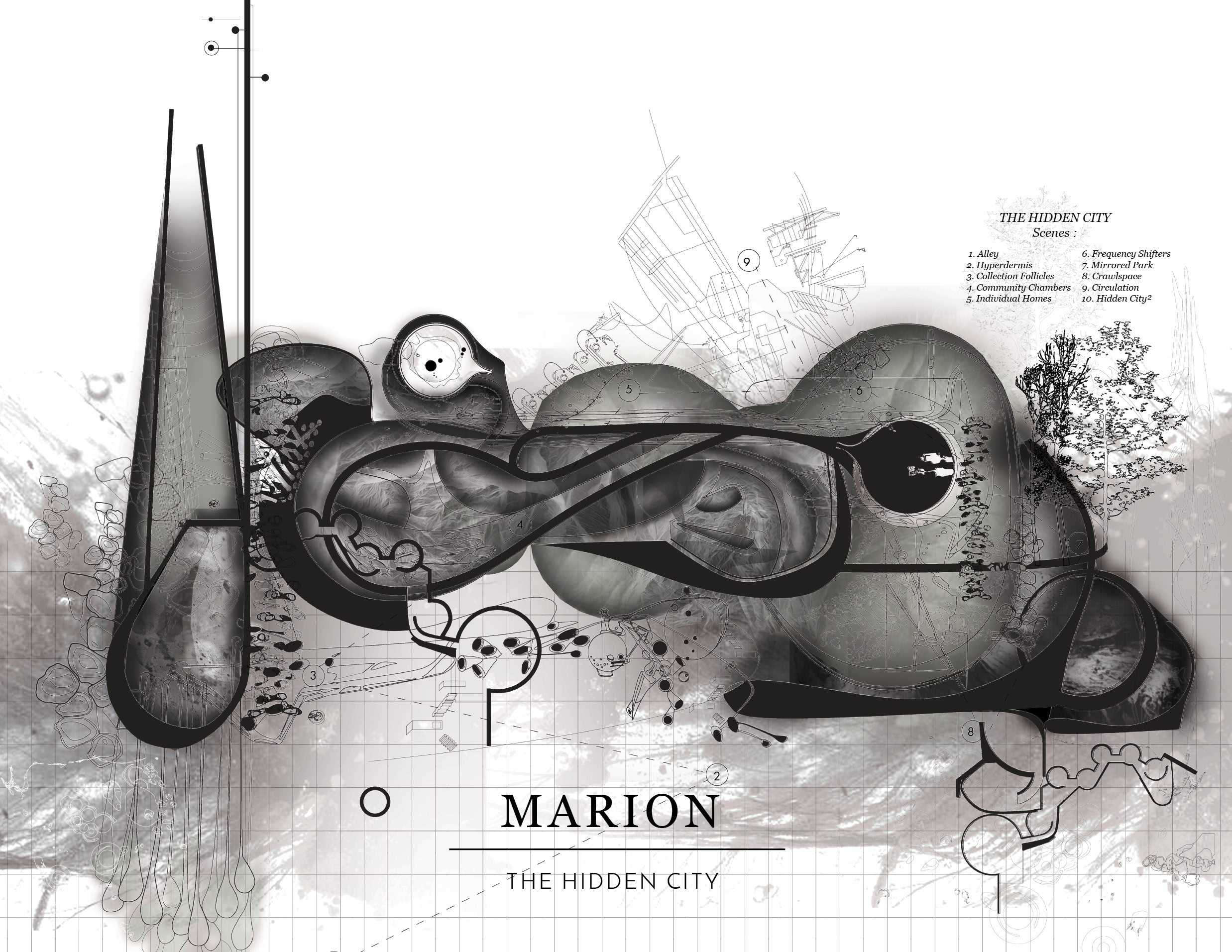
Image 1: 'Marion,' The Hidden City. The Hidden City is located along Via Margutta in Rome. Formerly the site of an ancient sewer line, it is a surprisingly quiet residential street just off of the bustling Piazza del Popolo. The colorful facades hold a rich history of famous inhabitants ranging from Fortuny to Wagner to Cy Twombly to Federico Fellini. Thousands of people have touched this place either consciously or subconsciously through the art, music, literature, and films developed here - though most probably do not have any idea where or if it exists at all. The street seems to transcend geographical location, connecting an international audience inside of the cultural imaginary, both an individual and communal experience. The allegorical aim of this city (the first of my eleven stories) is to explore the architecture of those who are hiding or wish to disappear, perhaps even in plain sight. Named after Marion Mahoney-Griffin, an American architect who lived in the shadow of Frank Lloyd Wright, the architectural designs are based on her work in order to give presence to her ghost. The following is an excerpt from the story: "Each resident has their own, unique threshold into the skin of the city wall, and to access this portal each must perform a precise sequence of operations with the passageway, activating it through touches, phrases whispered into disguised receptors and glances into hidden cameras. This is the only key; efficient and secure in its ephemerality."
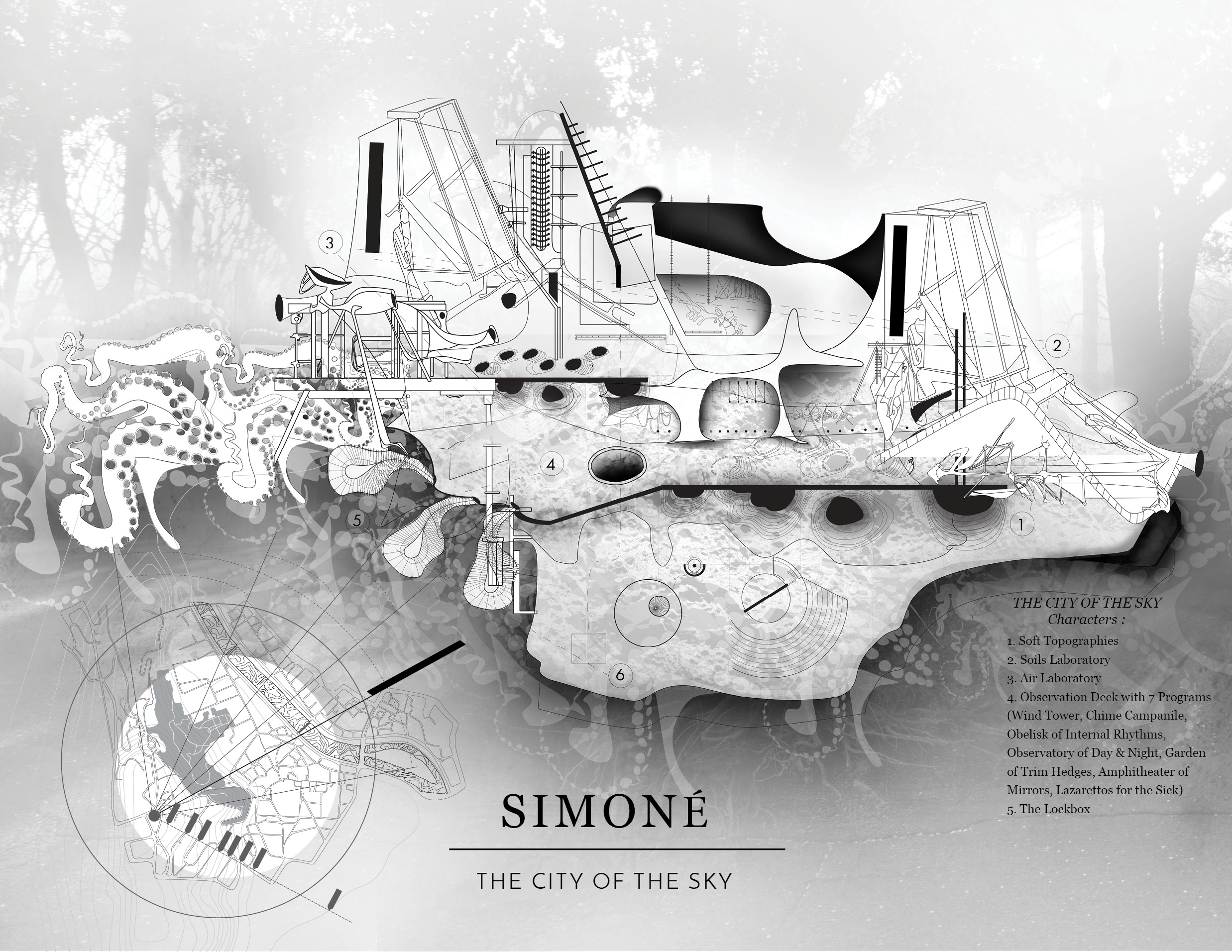
Image 2: 'Simone,' The City of the Sky. The City of the Sky is situated in Parco Gianicolo on the Janiculum Hill in Rome, Italy. The botanical research gardens of the University of Sapienza that are found inside the park date back to the reign of Nero (37 CE - 68 CE). The strange topography of the park, the intense privacy of the homes and gardens, and the physical elevation above the rest of the city that affords sweeping panoramic views out over Rome all support Calvino's original description of the ephemeral qualities associated with notions of sky. Named after Simone de Beauvoir, a French philosopher, the architecture of the city is tied closely to her theories of gender, transcendence, and essence. The allegorical aim of the city is that of physical and environmental health. The city rises each day from its nest in the park to the "space between the dense tree canopies and clouds" where it both purifies the air and the bodies of the sick before returning to the ground each evening. Short excerpt: "Each evening at twilight, the City of the Sky returns to the Gianicolo to nest. The ground swells and heaves in tectonic strain as it adjusts to accommodate hundreds of modular bodies as they land. The spherical craters formed by the heavy bodies in the park will ossify into ridges and valleys by morning. When the city departs, these silent witness will remain; the topography of absence."
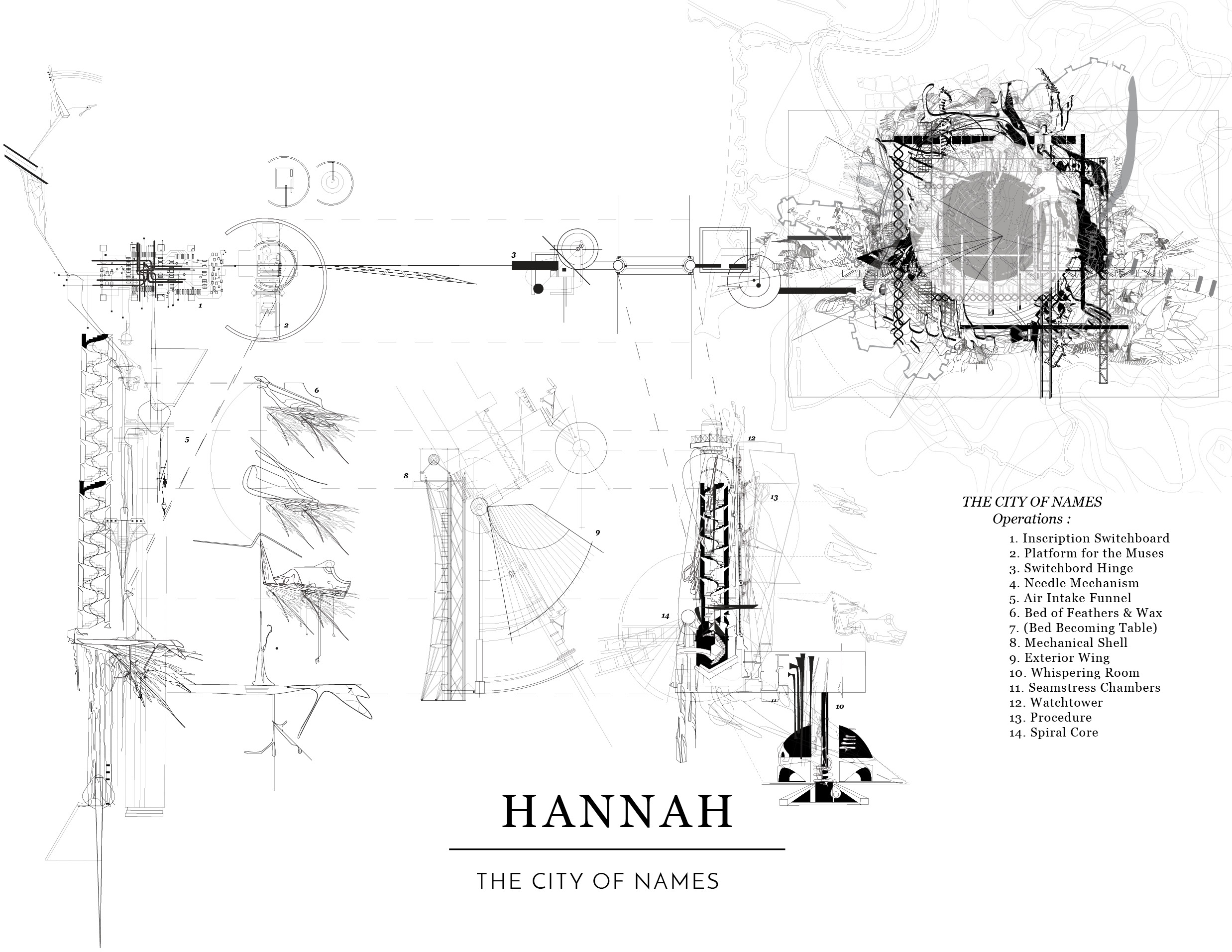
The Board:
